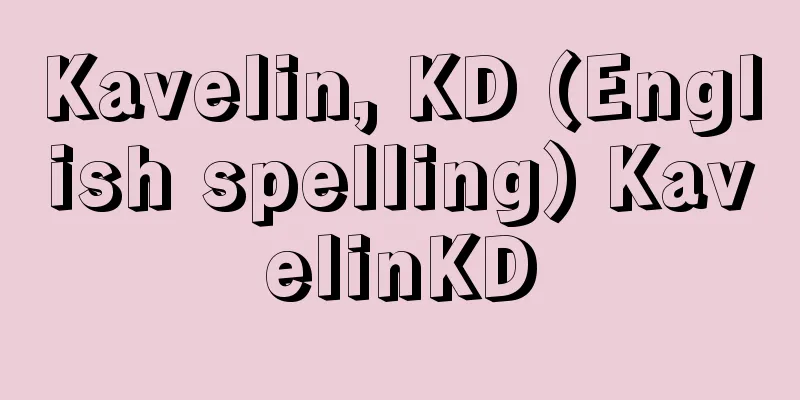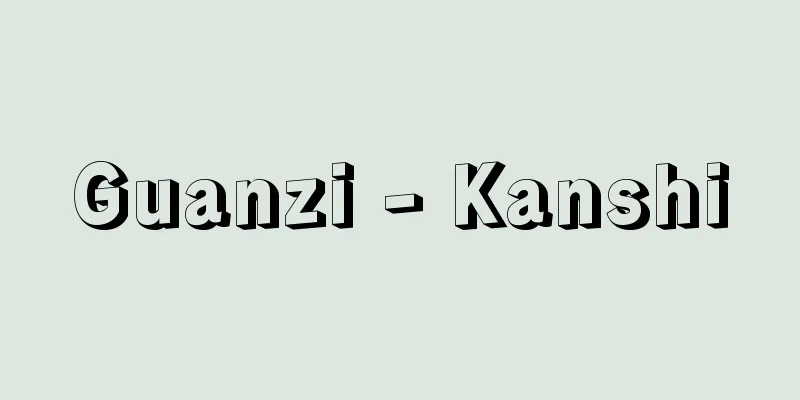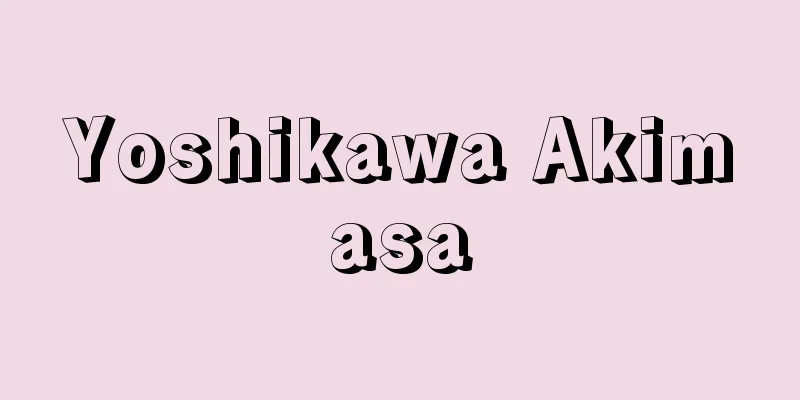Burundi - Republic of Burundi (English spelling)

|
A small country located in southeastern Africa on the northeastern shore of Lake Tanganyika. It is a landlocked country bordering Rwanda to the north, Tanzania to the east and south, and the Democratic Republic of the Congo (formerly Zaire) to the west. Its official name is the Republic of Burundi, Republika y'Uburundi, and it was called Urundi during the colonial period. It has an area of 27,834 square kilometers, and a population of 6,483,000 (estimated in 1999), 8,440,000 (estimated in 2011). The population density is 303 people per square kilometer (2011). The capital is Gitega. It was moved from Bujumbura in December 2018. However, some institutions are in Bujumbura. [Ken Akasaka and Yukiko Kondo] NatureMost of the country is made up of plateaus. In the westernmost part of the country, the western wing of the Great Rift Valley runs, and a depression at an altitude of 800 to 1000 meters stretches from north to south. Lake Tanganyika (772 meters above sea level) and the valley of the Ruzizi River that flows into it are located here, and it forms the border with the Democratic Republic of the Congo. The eastern side of the depression is a huge fault scarp, and its shoulders form a mountain range with an altitude of about 2000 meters, with Mount Heha (2670 meters) as its highest peak. The central plateau slopes gently to the east, with an average altitude of 1500 meters. It is covered with fertile volcanic soil, and small rivers that are the source of the Nile flow through it. Towards the border with Tanzania, the area becomes even lower, becoming a sedimentary plain at an altitude of 1000 meters. Although it lies directly on the equator, the climate is generally mild, with the average annual temperature remaining at 20°C on the central plateau. Annual precipitation is 1,200 mm, concentrated twice a year, from March to May and October to December. It is an area blessed with rainfall for Africa, and tropical rainforests can be seen on the mountainside. In the Great Rift Valley in the west, the average annual temperature is slightly higher at 23°C, but as it is downwind of the trade winds, the area is slightly drier with an annual precipitation of 750 mm, and the vegetation of the savanna dotted with Euphorbia (a plant of the Euphorbiaceae family) spreads across the area. Burundi's largest city is Bujumbura, which was the capital until December 2018. It is located on the northern shore of Lake Tanganyika, has an international airport, and is the country's economic center (some government agencies remain in Bujumbura even after the capital was moved). [Ken Akasaka and Yukiko Kondo] historyThe original indigenous people were the Twa hunter-gatherers. The conventional theory was that "Bantu-based Hutu farmers came from the Congo Basin in the 7th to 10th centuries, and then Nilotic Tutsi cattle herders invaded from the northeast in the 15th and 16th centuries, conquered the Hutus, and dominated them as landlords and owners of livestock, forming the hierarchical Burundi Kingdom." However, in recent years, this theory has been questioned, and it is now understood that Tutsis and Hutus are not separate ethnic groups with different origins, but are classified based on their occupations. Both Tutsis and Hutus speak Bantu languages. The Tutsis are primarily livestock farmers, while the Hutus are primarily farmers, and the two groups have intermingled while in conflict. In addition, Burundi had a royal family called Ganwa, which was a social category distinct from the three ethnic groups of Tutsis, Hutus, and Twas. The border between Tutsis and Hutus was clearly demarcated and conflict deepened due to colonial policies by European countries since the 19th century. In the early 20th century, colonial authorities forced residents to state their Tutsi, Hutu, or Twa origins on their identity cards, thereby indirectly strengthening their rule by creating disparities in treatment. In the second half of the 19th century, Burundi came under the German sphere of influence, and in 1890 it was incorporated into German East Africa (Tanganyika). It was then annexed in 1899 with Rwanda (called Ruanda during the colonial period), a country also ruled by Tutsis over Hutus, to form the new colony of Ruanda-Urundi. After World War I, the colony came under Belgian rule as a League of Nations Mandate, and continued to be ruled by Belgium as a United Nations Trust Territory after World War II. However, because both Germany and Belgium adopted indirect rule, the power of the traditional kingdoms was preserved and is said to have been strengthened during this time. In 1959, both Luanda and Urundi were granted internal autonomy, but in Urundi the Hutu nationalist movement started relatively late, and politics were led by the royal family. Many political parties were formed, but the National Progressive Unity Party (UPRONA: Union pour le progrés national), founded by Prince Louis Rwagasore (1932-1961, assassinated), dominated the party, which demanded independence through a federal system with Rwanda. However, in 1961, Rwanda overthrew the Tutsi dynasty and proclaimed a Hutu republic, so the two countries became independent separately, and on July 1, 1962, Urundi became independent as the Kingdom of Burundi. After independence, the king established political leadership in Burundi, but violent regime transitions and cabinet changes based on power struggles in Burundi's political circles were repeated. Amid continuing political instability, in July 1966, forces led by the Chief of the Army Michel Micombero (1940-1983) seized political control, dethroning King Mwambutsa IV (1912-1977), who was on a foreign trip, and enthroning Crown Prince Charles Ndizeye (1947-1972) as Ntare V in September of the same year. However, in November of the same year, the new king was deposed by Micombero, a Tutsi whom he had appointed as Prime Minister, and Burundi transitioned to a republic. After taking office as president, Micombero tried to resolve conflicts between ethnic groups by forming an administration that included Hutus, but in 1972, the return of King Ntare V to the country led to political turmoil (Hutu armed forces rebelled in the south, killing mostly Tutsis, with the death toll estimated at about 3,000), which led to a thorough crackdown on Hutus. It is said that 100,000 to 200,000 Hutus were massacred, and about 150,000 refugees fled to neighboring countries, mainly Tanzania. After taking power, UPRONA was the only political party, but in 1974, the Republic Constitution was enacted, which stipulated that the leader of the party would automatically become president, strengthening his own dictatorial regime. However, in November 1976, Tutsi Lieutenant Colonel Jean Baptiste Bagaza (1946-2016) staged a military coup, ousted Micombero, and took over as president. [Ken Akasaka and Yukiko Kondo] PoliticsLike the previous administration, the Bagaza administration was dominated by Tutsis, but it focused on easing conflicts between ethnic groups. UPRONA, which collapsed due to a coup, was re-established in 1979, the system was democratized, and a new constitution was approved by a national referendum. In September 1987, while President Bagaza was traveling abroad, Tutsi Major Pierre Buyoya (1949-2020) staged a military coup, which led to the suspension of the constitution and the establishment of the Military Commission for the Salvation of the Nation. Buyoya, who became president in 1988, advocated national reconciliation, and promoted policies such as appointing equal numbers of Tutsis and Hutus to the cabinet, establishing a Charter of National Unity, and establishing a constitution that established a multi-party system. In the 1993 elections, the first change of government in 27 years took place, with the opposition Burundi Democratic Front (FRODEBU: Front pour la démocratie au Burundi) taking power. Melchior Ndadaye (1953-1993), the Hutu president who was elected in Burundi's first democratic election, was assassinated by the Tutsi-controlled military three months after taking office. The political situation worsened, with more than 50,000 Hutus being massacred and a large number of refugees fleeing the country. His successor, Cyprien Ntaryamira (1955-1994), died in April 1994 when his plane was shot down, along with the Rwandan president. Sylvestre Ntibantunganya (1956-), who succeeded him as president, also failed to take control of the situation, and in July 1996, a military coup led to former president Buyoya becoming interim president. Neighboring countries that had supported FRODEBU in seeking a return to civilian rule opposed this military government (UPRONA) and demanded his resignation through economic sanctions, but interim president Buyoya did not comply and, following the promulgation of a transitional constitution until the establishment of a new constitution in June 1998, he was officially inaugurated as president. In August 2000, with the mediation of Mandela, the president of the Republic of South Africa, the Arusha Peace Accords were reached by the parties in the conflict, excluding Hutu anti-government armed groups, and in November 2001, an interim government for the transition to a democratic system was established, with Buyoya remaining as president. At the end of April 2003, Domitien Ndayizeye (1953- ), a Hutu who served as Secretary-General of FRODEBU and Vice President, became President under the Arusha Peace Accords. During this time, Hutu anti-government armed forces continued fighting, but in November 2003, the transitional government and the largest Hutu anti-government armed group, the National Congress for the Defense of Democracy-Forces for the Defense of Democracy (CNDD-FDD: Conseil national pour la défense de la démocratie-Forces pour la défense de la démocratie), agreed to a ceasefire. In February 2005, a new constitution was adopted that included a power-sharing system that determined the proportion of political posts by ethnic group. In the presidential election in August 2005, Pierre Nkurunziza (1963-2020), a Hutu from the CNDD-FDD, won and became President. In September 2006, a comprehensive ceasefire agreement was signed between the government led by Nkurunziza and the Rwasa faction of the Forces nationales de liberation (FNL), the only Hutu rebel group continuing its armed struggle. Nkurunziza was re-elected for a third term in the presidential elections in June 2010 and August 2015. The political system is a republic. The parliament is a bicameral system consisting of the Senate and the House of Representatives (National Assembly), with 54 seats in the Senate and 118 in the House of Representatives (five-year terms). The president serves a five-year term. [Ken Akasaka and Yukiko Kondo] Economy and IndustryIn Burundi, more than 90% of the population is engaged in agriculture, and nearly half of the country's land area is arable, supporting an overcrowded population. The majority of agricultural products are for self-sufficiency, and crops such as cassava, bananas, sweet potatoes, beans, corn, sorghum, millet, and tobacco are produced on small plots of arable land. In addition, rice is cultivated under irrigation in the Imbo and Ruzizi plains and on the plains in the east. The main cash crop is coffee, which began to be cultivated on plantations during the Belgian colonial period, and 34,000 tons were produced in 1992. Coffee is the largest source of foreign currency for exports, with most of it being shipped to the United States. However, the production volume shows a remarkable change every year due to the economic downturn and the deterioration of coffee trees, and recovered to 29,951 tons in 2006, 8,210 tons in 2007, and 24,700 tons in 2008, but dropped to 6,814 tons in 2009. Tea cultivation was introduced in 1963 on plantations in the Teza and Murambiya highlands in the west, and has continued to grow steadily. Cotton is produced in the Imbo and Ruzizi plains, and most of the exports are to Belgium. However, the production volume of both is small, at 6,729 tons of tea and 2,547 tons of cotton in 2009, and there has been almost no increase in production in recent years. Livestock farming is also popular, mainly in the highlands in the midwest, and in 2009, 550,000 cattle, 2.72 million goats, 290,000 sheep, and 210,000 pigs were raised, and some leather is exported. Since 1968, the country's economic development has been carried out through five-year plans, but the Fourth Plan, which began in 1983, placed emphasis on rural development. From 2007 to 2009, the First Growth and Poverty Reduction Strategy (GPRS) was implemented under the leadership of the World Bank and the International Monetary Fund (IMF), with good governance, equitable and sustainable growth, human resource development, and AIDS control as priority areas. Other industries include fishing on Lake Tanganyika, and Germany also provides aid for fishing resources. Industry is underdeveloped and is limited to the processing of agricultural products such as coffee, cotton, and tea, and the manufacture of beer and soft drinks. Mineral resources include abundant nickel reserves, which are expected to be developed. Gross domestic product (GDP) per capita is $144 (2008), and the GDP growth rate is 3.4% (2009). It is a landlocked country, 1,400 km from the port of Dar es Salaam (Tanzania) in the east and 2,000 km from the port of Matadi (Democratic Republic of the Congo) in the west, so trade is sluggish and there is a large import surplus every year. The main trading partner of the country used to be Belgium, but in recent years the main trading partners for exports have been Germany, Switzerland, Belgium, and Sweden, and for imports, Saudi Arabia, Belgium, Uganda, and Kenya, and there is a lot of trade with countries other than Belgium. Following its membership in the East African Community (EAC) together with Rwanda in 2007, Burundi has begun to focus on the tourism industry. The number of foreign visitors was 100,000 in 1990, and then dropped to 15,000 during the conflict, but increased to 220,000 between 2007 and 2008. The currency used is the Burundian franc. [Ken Akasaka and Yukiko Kondo] Society and CultureThe population composition is almost the same as in Rwanda, with Hutus making up 85% of the population, Tutsis 14%, and Twa 1%. All three groups speak Runji, which is linguistically closely related to Rwanda's Nyarwanda and belongs to the Bantu language family. The official languages are Runji and French, but Swahili is also widely spoken. Most of the population is Christian, with Catholics making up 65% of the population, Protestants 20-25%, Islam 5%, and the rest following traditional religions. Education has traditionally been provided mainly by Christian organizations, but since 2005, primary education (six years) from age seven has been free of charge, and the government provides large subsidies. As a result, the school enrollment rate has been improving year by year, reaching 89.7% in 2009 from 59.8% in 2005. Regarding higher education institutions, the National University was opened in Bujumbura in 1964, and there are numerous other universities, both public and private. [Ken Akasaka and Yukiko Kondo] Relations with JapanBurundi's exports to Japan, mainly coffee and tea, amount to $8.8 million (2010), while imports from Japan include cars and motorcycles, totaling 1.1 billion yen (2010). In the 1980s, Japan provided 135 buses as grant aid. After the conflict between the Tutsi and Hutu ethnic groups (1993-2005), Japan focused on "consolidation of peace" and "improvement of basic living conditions" as pillars of its support for Burundi, focusing mainly on infrastructure development and human resource development. In 2009, the Japan International Cooperation Agency (JICA) launched the "Public Transport Authority Management Capacity Regeneration Project," which provided 86 buses in 2010. Cultural exchanges are scarce, but a Burundian drum ensemble has visited Japan several times. As of 2019, Burundi is accredited to Japan through the Burundian Embassy in China, and Japan is accredited to Burundi through the Japanese Embassy in Rwanda. [Yukiko Kondo] "Understanding Contemporary Conflicts in Africa" edited by Shinichi Takeuchi (1998, Institute of Developing Economies) " "Contemporary Conflicts in Africa: History and Subjects" edited by Shinichi Takeuchi (2000, Institute of Developing Economies) " The Scope of Human Security: Issues in Africa" edited by Katsuya Mochizuki (2006, Institute of Developing Economies) [References] | | | | | | | | [Additional resources] |"> Burundi flag ©Shogakukan Illustration/Shogakukan Creative "> Burundi Location Map Source: Shogakukan Encyclopedia Nipponica About Encyclopedia Nipponica Information | Legend |
|
アフリカ南東部、タンガニーカ湖の北東岸に位置する小国。北はルワンダ、東と南はタンザニア、西はコンゴ民主共和国(旧、ザイール)に接する内陸国である。正称はブルンジ共和国Republika y'Uburundiで、植民地時代はウルンジUrundiとよばれた。面積2万7834平方キロメートル、人口648万3000(1999年推計)、844万(2011年推計)。人口密度は1平方キロメートル当り303人(2011)である。首都はギテガGitega。2018年12月にブジュンブラから移った。ただし、一部機関はブジュンブラにある。 [赤阪 賢・近藤有希子] 自然国土の大部分は高原からなる。最西部にはアフリカ大地溝帯の西翼が走り、標高800~1000メートルの陥没帯が南北に延びている。ここにはタンガニーカ湖(湖面標高772メートル)と、それに注ぐルジジ川の河谷があり、コンゴ民主共和国との国境をなしている。陥没帯の東側は巨大な断層崖(がい)で、その肩部はヘハ山(2670メートル)を最高峰とする標高2000メートル級の山脈となっている。中央部の高原は東に向かって緩やかに傾斜し、標高は平均1500メートルである。火山性の肥沃(ひよく)な土壌に覆われ、ナイル川源流の小河川が流れている。タンザニア国境にかけてはさらに低くなり、標高1000メートルの堆積(たいせき)平野となっている。 赤道直下であるが気候は全体に温和で、中央部の高原では年平均気温は20℃にとどまる。年降水量は1200ミリメートルで、3~5月と10~12月の年間2回に集中して降る。アフリカでは降水に恵まれた所で、山腹では熱帯雨林の景観もみられる。西部の大地溝帯では年平均気温は23℃とやや高くなるが、貿易風の風下にあたるため年降水量は750ミリメートルとやや乾燥し、ユーフォルビア(トウダイグサ科の植物)が点在するサバンナの植生が広がっている。 ブルンジ最大の都市は2018年12月まで首都であったブジュンブラで、タンガニーカ湖の北岸に位置し、国際空港を備え、経済の中心地となっている(一部政府機関は遷都後もブジュンブラにある)。 [赤阪 賢・近藤有希子] 歴史もともと狩猟採集民のトゥワが先住民であった。従来の説では、「7~10世紀にコンゴ盆地からバントゥー系の農耕民フツ人が来往、その後15~16世紀に北東よりナイロート系の牛牧民ツチ人が侵入、フツ人を征服し、土地の支配者、家畜の所有者としてフツ人を支配し、階層的なブルンジ王国を形成した」とされてきた。しかし、近年このような説は疑問視され、ツチとフツは出自の異なる別々の民族ではなく、生業の違いによる分類だと理解されている。ツチ人もフツ人もバントゥー系の言語を話す。ツチ人は牧畜中心、フツ人は農耕中心の生業を営み、両者は対立しつつ混交してきた。またブルンジにはツチ、フツ、トゥワという三つのエスニック・グループ(民族集団)とは区別される社会的カテゴリーとしてガンワという王家が存在した。ツチとフツの境界が明確に区分され対立を深めたのは、19世紀以来のヨーロッパ諸国による植民地政策によってであった。20世紀初め植民地当局は住民の身分証明書に、ツチ、フツ、トゥワいずれかの出自を書き込ませ、待遇に格差をつけることによって間接的に統治を強化したのである。 19世紀後半ブルンジはドイツの勢力圏下に入り、1890年ドイツ領東アフリカ(タンガニーカ)に編入された。その後1899年には同じようにツチがフツを支配するルワンダ(植民地時代はルアンダとよばれた)と併合され、新たな植民地ルアンダ・ウルンジが構成された。第一次世界大戦後、この植民地は国際連盟委任統治領としてベルギーの統治下に入り、第二次世界大戦後も国際連合信託統治領として同国に支配された。しかし、ドイツもベルギーも間接統治の方法をとったため、この間、伝統的な王国の権力は温存され、むしろ強化されたといわれている。 1959年にルアンダとウルンジはそれぞれ内政の自治権が認められたが、ウルンジではフツの民族主義的な運動は比較的遅く開始され、政治は王家がリードした。多くの政党が誕生したが、ルイ・ルワガソレLouis Rwagasore王子(1932―1961。暗殺)が結成した国民進歩統一党(UPRONA:Union pour le progrés national)が圧勢を誇り、同党はルワンダとの連邦制による独立を要求した。しかし1961年にルワンダがツチ人の王朝を倒してフツ人による共和制を宣言したため、両国は別々に独立することになり、翌1962年7月1日、ウルンジはブルンジ王国として独立した。独立後のブルンジでは国王が政治の主導権を確立させていったが、ブルンジ政界の権力闘争を基盤とした暴力的な体制移行と内閣の交代が相次いだ。政情不安が続くなか、1966年7月、国軍長官のミコンベロMichel Micombero(1940―1983)を中心とする勢力が政治の主導権を握り、外遊中の国王ムワンブツァ4世(1912―1977)を廃位して、皇太子シャルル・ンディゼエCharles Ndizeye(1947―1972)を同年9月にンタレ5世Ntare Ⅴとして即位させた。ところが同年11月には、新王は自らが首相に指名したツチ人のミコンベロによって追放され、ブルンジは共和国に移行した。 大統領に就任したミコンベロは、フツ人も含む政権を構成するなどエスニック・グループ間の対立解消を図っていたが、1972年のンタレ5世の帰国に伴う政情混乱(フツ武装勢力が南部で反乱を起こしておもにツチ人を殺戮、犠牲者数は約3000人ともいわれる事件)を機に、徹底的なフツ人弾圧を行った。虐殺されたフツ人は10万~20万人ともいわれ、約15万人の難民がタンザニアを中心とする近隣諸国に流出した。また政権獲得後、UPRONAを唯一の政党としていたが、1974年に共和国憲法を制定して、同党の党首が自動的に大統領に就任することにし、自身の独裁体制を強化した。しかし1976年11月、ツチ人の中佐バガザJean Baptiste Bagaza(1946―2016)が軍事クーデターを起こしてミコンベロを追放し、かわって大統領に就任した。 [赤阪 賢・近藤有希子] 政治バガザ政権も前政権同様ツチ人が主体であったがエスニック・グループ間の対立緩和に力を入れた。クーデターによって瓦解(がかい)したUPRONAは1979年に再建され、体制は民主化し新憲法が国民投票で承認された。1987年9月、大統領バガザが外遊中、少佐であったツチ人のブヨヤPierre Buyoya(1949―2020)が軍事クーデターを起こし、憲法停止、国家救済軍事委員会設立の事態となった。1988年に大統領に就任したブヨヤは国民和解を標榜(ひょうぼう)し、内閣にツチ人とフツ人を同数登用、国民統一憲章の制定、複数政党制を定めた憲法の制定などの政策を進めた。1993年の選挙では、27年ぶりの政権交代が行われ、野党のブルンジ民主戦線(FRODEBU:Front pour la démocratie au Burundi)が政権を握った。ブルンジ初の民主選挙で選出されたフツ出身の大統領ンダダエMelchior Ndadaye(1953―1993)は、就任後3か月でツチ人が掌握する軍の手で暗殺された。また、5万人以上のフツ人虐殺が行われ、大量の難民が流出するなど政治情勢が悪化した。後任大統領のンタリャミラCyprien Ntaryamira(1955―1994)もルワンダの大統領とともに、1994年4月の搭乗機撃墜に遭遇し死去した。ついで大統領に就任したンティバントゥンガニャSylvestre Ntibantunganya(1956― )も事態掌握に失敗し、1996年7月、軍のクーデターで元大統領のブヨヤが暫定大統領に就任した。民政復帰を求めてFRODEBUを支援してきた近隣諸国は、この軍事政権(UPRONA)に反対し、経済制裁により退陣を求めたが、暫定大統領ブヨヤはこれに応じず、1998年6月、新憲法制定までの移行期憲法の公布に続き、正式に大統領に就任した。2000年8月、南アフリカ共和国の大統領であったマンデラなどの仲介によって、フツ系反政府武装勢力を除いた紛争当事者によるアルーシャ和平合意が成立し、2001年11月、民主制度移行のための暫定政府が発足、ブヨヤはそのまま大統領に留任した。 2003年4月末、アルーシャ和平合意に基づいてFRODEBU事務局長で副大統領を務めるフツ人のンダイゼイエDomitien Ndayizeye(1953― )が大統領に就任。この間もフツ反政府武装勢力は戦闘を継続していたが、2003年11月、暫定政府と最大のフツ系反政府武装勢力である民主主義防衛国民会議・民主主義防衛軍(CNDD-FDD:Conseil national pour la défense de la démocratie-Forces pour la défense de la démocratie)が停戦合意した。2005年2月、エスニック・グループごとに政治ポストの割合を定めた権力分有制度が盛り込まれた新憲法が採択された。2005年8月の大統領選挙において、CNDD-FDDのフツ人ピエール・ンクルンジザPierre Nkurunziza(1963―2020)が当選し、大統領に就任。2006年9月、ンクルンジザ率いる政府と唯一武装闘争を継続していたフツ系反政府武装勢力の解放国民勢力(FNL:Forces nationales de liberation)ルワサ派との包括的停戦合意が締結された。2010年6月と2015年8月の大統領選挙においてンクルンジザが再選された(三期目)。 政体は共和制。議会は上院と下院(国民議会)の二院制で、議席数は上院54、下院118(任期5年)。大統領の任期は5年。 [赤阪 賢・近藤有希子] 経済・産業ブルンジでは、国民の9割以上が農業に従事し、国土の半分近くが耕地にあてられ、過密な人口を支えている。農産物の大部分は自給用の食料で、キャッサバ、バナナ、サツマイモ、豆類、トウモロコシ、ソルガム(モロコシ)、ミレット(キビの一種)、タバコなどが細分化された耕地で生産される。そのほかに灌漑(かんがい)によるイネの栽培が、インボ平原やルジジ平原、東部の平地などで行われている。主要な換金作物はコーヒーで、ベルギー領時代にプランテーションで栽培が開始され、1992年には3万4000トンを生産した。コーヒーは輸出全体における最大の外貨獲得資源であり、大半がアメリカに出荷される。しかし、その生産量は不景気やコーヒーの木の老朽化などが原因で毎年顕著な変化を示し、2006年には2万9951トン、2007年は8210トン、2008年は2万4700トンと回復したが、2009年には6814トンにまで減少している。茶の栽培は1963年より西部のテザとムランビヤ高地の農園で導入され、順調に成長を続けた。綿花はインボ平原、ルジジ平原で生産され、輸出のほとんどはベルギー向けである。しかし、いずれの生産量も、2009年で茶6729トン、綿花2547トンと小さく、近年は生産量の増加もほとんどみられない。中西部の高原地帯を中心に牧畜も盛んで、2009年にはウシ55万頭、ヤギ272万頭、ヒツジ29万頭、ブタ21万頭が飼育され、皮革の一部が輸出されている。 なお、1968年より五か年計画による国の経済開発が行われてきたが、1983年から始まった第四次計画では、農村の開発に重点が置かれるようになった。2007~2009年には世界銀行と国際通貨基金(IMF)主導のもと、第一次成長・貧困削減戦略(GPRS)が実施され、グッド・ガバナンス(良い統治)、公正で持続的な成長、人的資源開発、エイズの抑制が重点分野とされた。 他の産業では、漁業がタンガニーカ湖で行われ、ドイツも漁業資源に対する援助を行っている。工業は未発達で、コーヒー、綿花、茶などの農産物加工と、ビールや清涼飲料水の製造などに限られている。鉱産物資源ではニッケルの埋蔵量が豊富で、開発が期待される。1人当り国内総生産(GDP)は144ドル(2008)で、GDP成長率は3.4%(2009)である。 内陸国で、東のダルエス・サラーム港(タンザニア)からは1400キロメートル、西のマタディ港(コンゴ民主共和国)からは2000キロメートル離れているため、貿易は不振で、毎年大幅な輸入超過が続いている。貿易相手国は、かつてはベルギーが中心であったが、近年では輸出はドイツ、スイス、ベルギー、スウェーデン、輸入はサウジアラビア、ベルギー、ウガンダ、ケニアなどがおもな貿易相手国となっており、ベルギー以外の国との取引も多い。 2007年にルワンダとともに東アフリカ共同体(EAC)に加盟したことも受けて、観光産業に力を入れ始めている。外国人来訪者の数は、1990年には10万人、その後紛争時には1.5万人にまで減少したものの、2007~2008年には22万人と増加した。使用通貨はブルンジ・フラン。 [赤阪 賢・近藤有希子] 社会・文化住民構成はルワンダとほとんど同じで、フツ人が人口の85%を占め、ツチ人が14%で、トゥワ人は1%とされる。三つのグループはともにルンジ語を話すが、これはルワンダのニャルワンダ語と言語的に近縁で、ともにバントゥー語に属する。公用語はルンジ語とフランス語であるが、スワヒリ語もよく普及している。宗教はキリスト教がほとんどで、カトリックが人口の65%に浸透、プロテスタントが20~25%、イスラム教が5%、残りは伝統的な宗教を奉じている。教育も従来はキリスト教団体が中心となって行ってきたが、2005年以降、7歳からの初等教育(6年間)は無償で受けられるようになり、政府も多くの助成金を出している。その結果、学校への入学者率は年々改善されており、2005年の59.8%から、2009年には89.7%に達している。高等教育機関は、1964年にブジュンブラに国立大学が開設され、公私立を含む多数の大学などが存在する。 [赤阪 賢・近藤有希子] 日本との関係ブルンジの日本への輸出はコーヒーや茶を中心に880万ドル(2010)、日本からの輸入は自動車や二輪車(オートバイ)で11億円(2010)である。1980年代に無償資金協力で日本は135台のバスを供与。ツチとフツ両民族間の紛争(1993~2005)後、日本はブルンジに対して「平和の定着」と「基礎生活環境の改善」を支援の柱に据え、おもにインフラの整備と人材育成に力を入れている。2009年(平成21)より国際協力機構(JICA)は「公共交通公社運営能力再生プロジェクト」を開始し、2010年には86台のバスが供与された。 文化交流は希薄であるが、ブルンジのドラム楽団がこれまでに数回の来日を果たしている。2019年時点で、ブルンジは在中国ブルンジ大使館が日本を兼轄、日本は在ルワンダ日本大使館がブルンジを兼轄している。 [近藤有希子] 『武内進一編『現代アフリカの紛争を理解するために』(1998・アジア経済研究所)』▽『武内進一編『現代アフリカの紛争――歴史と主体』(2000・アジア経済研究所)』▽『望月克哉編『人間の安全保障の射程――アフリカにおける課題』(2006・アジア経済研究所)』 [参照項目] | | | | | | | | [補完資料] |"> ブルンジの国旗 ©Shogakukan 作図/小学館クリエイティブ"> ブルンジ位置図 出典 小学館 日本大百科全書(ニッポニカ)日本大百科全書(ニッポニカ)について 情報 | 凡例 |
<<: Kingdom of Burundi - Burundi Kingdom
>>: Edward George Earle Bulwer-Lytton, 1st Baron Lytton
Recommend
Prairie Pointer
...It is native to North America and has about 30...
Kümmel - Kümmel (English spelling) German
Kümmel is the German word for caraway, and is a c...
coal cleaning
…In the broad sense of coal washing, the central ...
Sokogisu - Sping eel
This marine fish belongs to the order Notacanthus...
Early rice - Hayamai
This refers to early-ripening rice, i.e. wase (ear...
Click beetle (rice pound beetle) - Click beetle (English spelling)
A general term for insects belonging to the beetle...
Officer Candidate School - Kanbuko Hosei Gakko
An institution that educates officer candidates fo...
Sengokuhara
It is also called "Sengokubara." This g...
Kano Minenobu
Year of death: 13 January 1709 (5 December 3, 1709...
Kramer, PL
...However, from the viewpoint of architectural t...
Cauderismo - Cauderismo
...The reasons for the emergence of such leaders ...
Amako Tsunehisa
Year of death: Tenbun 10.11.13 (1541.11.30) Year o...
Matsubayashi
A form of entertainment performed at New Year'...
Kano Eitoku
Year of death: September 14, 1590 (October 12, 159...
Kushan Gold Coin
…Roman imperial documents tell us that a large am...









